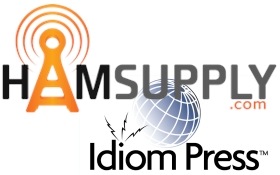About Transceivers with ‘Built-in’ Keyers
About Transceivers with ‘Built-in’ Keyers.
Morse Code keyers are everywhere these days – most new transceivers come with built-in keyers. So why isn’t sending CW on them much fun? Have you considered that maybe it’s not the paddle, nor the operator, but instead that built-in keyer that is making your CW transmission more work than pleasure?
So why isn’t that built in keyer more user friendly? Why? Because it was almost surely designed by a software engineer who is likely not a ham, and even more likely someone who never has made a CW QSO in his life.
Not only that, but the keyer exists purely in the transceiver software. All modern transceivers have their various functions managed by a built in central computer – the CPU. Everything is controlled by that CPU – tuning, frequency synthesization, bfo, second VFO, filter selection, the works. The CPU must also fulfill the keyer duties as well.
Modern transceivers do not use dedicated circuitry for keyers – instead they multi-task the CPU. But whereas touching your paddle should be the first step in initiating the sending of a CW dot or dash, as far as the CPU is concerned it is one of the very last. The CPU monitors your paddle for a dot or dash closure – AFTER it has taken care of all the other things it needs to do to keep your transceiver running. Considering these handicaps, is it any wonder that transceiver “keyers” are not particularly user friendly?
QSK operation, desired by many CW operators, is a feature of most new transceivers. However, almost without exception, dots and dashes are truncated by the QSK timing circuitry, so your outgoing CW sounds very light in weight at the other end. And even if correction is restored, the transceiver should be able to correct for further timing distortion truncation introduced by your linear. Does your transceiver do this? Where is the control?
A dedicated outboard CW keyer could offer many advantages. For one thing, it would not have to share CPU time with other functions. It could be designed by people who are dedicated CW operators, who understand what a keyer truly should be. It could manage your QSK timing so your CW signal is perfect. It would offer a lot of other features lacking in the transceiver keyers that would make your CW operating a pleasure.
A major advantage of the outboard dedicated keyer comes when you change rigs. The new shiny transceiver will of course have the mandatory built-in-software keyer, just like the old one did. But guess what? The new keyer is just about guaranteed to be different from that in the earlier rig, even if both rigs came from the same manufacturer. The paddle timing is different, the “feel” is different. You say you liked the “feel” of the old rig better? Tough.
Clearly, an outboard keyer won’t have that problem if you like the outboard keyer’s “feel”, timing and features, you know it will pick right up with the new rig, just as it did with the old.




 Webmaster NØUN
Webmaster NØUN